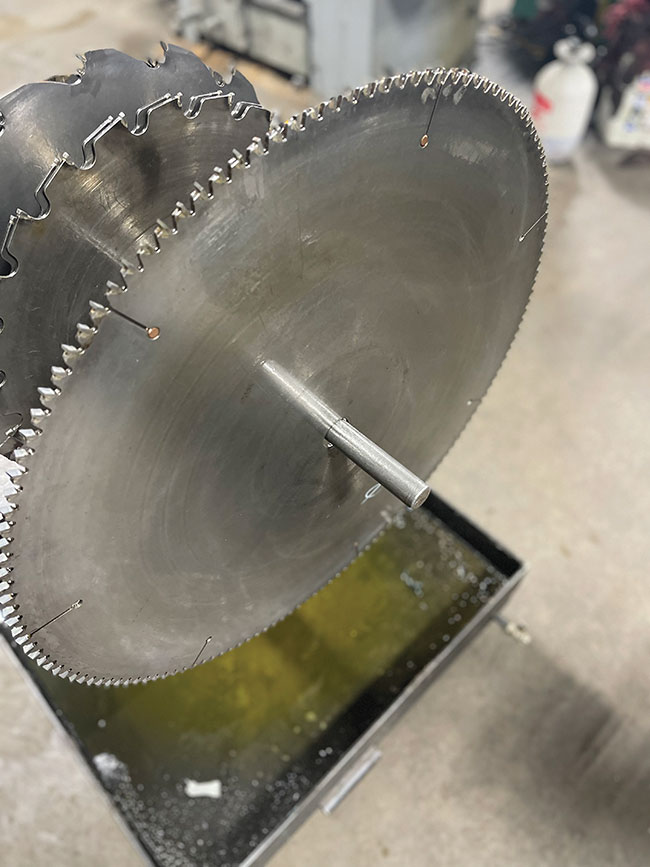
Features
Opinions
Saw Filing 101: Trimming the ends
November 28, 2022 By Paul Smith
 Photo: BID Group.
Photo: BID Group. When designing trim saws, close attention to the specifications of the saw blade, the machine, and the application should be considered.
Is the saw going to be cutting green lumber? Dry lumber? Are you cutting below the arbor or above the arbor? All of these must be factored into the design, along with determining the proper trimmer for getting the best results.
In the past, a traditional green end trimmer would normally drop a saw with a negative hook angle. This negative configuration would allow the saw to drop further down, and the force would actually help hold the lumber down as it went under the saws.
The downside of the negative hook angle is that it can increase the occurrence of splintering the ends. This is more likely at the dry end trimmer where splintering certainly needs to be avoided. Most mills now use a saw with a positive hook angle on both the green and dry end trimmers. This is primarily to cut down on splintered ends.
One should also consider the hook angle of the expansion slots in their trim saws. The hook angle on the expansion slots will decrease cracking if they are cut on a positive hook instead of a negative.
We also suggest using copper plugged expansion holes at the end of the slots. This accomplishes two things: further reducing cracking due to the chamfered holes and copper inserts and cutting down on noise that air would make whistling through the holes.
Remember, when trouble happens it may not be a saw issue. Check the hold-down shoes and lugs, ensuring that they are not worn or at least worn uniformly to ensure the proper flow of the boards through the cut. Make sure when repairing or replacing the transfer chains that they are all replaced at the same time to avoid pulling the boards while in the cut.
Today, because of the faster lug requirements on the dry end trimmers, a power cut normally is the best and it is achieved with a positive hook angle. Remember, this is also best to keep splintering down to a minimum.
Sharp saws are always important to make a good clean cut. Mills should change their trim saws at least weekly or whenever they first show signs that they are dull, such as increased heat, horsepower and noise.
Typically, trim saw teeth were carbide and had an alternate top bevel. Carbide is still the prevalent material in trim saws, but many mills have gone to a V-top configuration allowing both sides of the cutting tip to work simultaneously. This creates less work for the saw, a smoother cut in the wood, and best of all for the mill’s bottom line, a 120-tooth trim saw can be replaced with a 60-tooth saw.
We have been suggesting to the mills in our area to change to V-top tip when the saw needs re-tipping. This will give a smoother cut, stay sharper longer and just run better overall. A sharp trim saw will certainly help with a smooth end cut.
Paul Smith is the owner and CEO of Smith Sawmill Service (BID) with locations in Texas, Louisiana and North Carolina. Reach him at paul@smithsawmillservice.com.
Print this page